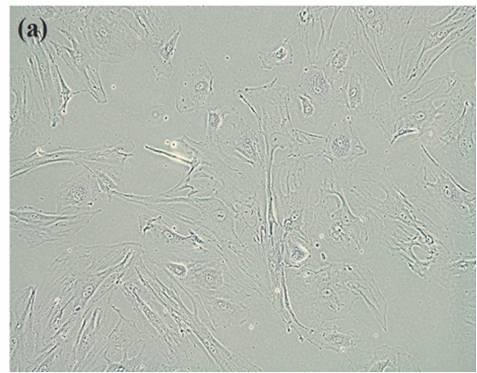Abstract
Mesenchymal stem cells population has been successfully isolated from the matrix and characterised for its stemness properties. Endothelial cells from the vein of the umbilical cord which are usually termed as HUVEC are also of interest to researchers as it can be manipulated in vitro to study endothelial cells behaviour and vascular-associated diseases. Immunophenotyping for positive and negative markers of mesenchymal stem cells was performed on HUVEC and compared to the closest stem cells that were isolated from the umbilical cord matrix which is termed as HUCMSC in this study. The expressions of a set of stemness genes were also detected using qPCR. The results showed that HUVEC strongly expressed hematopoietic and mesenchymal stem cells markers (CD31, CD34, CD9, CD44, CD73 and CD90) while HUCMSC possess mesenchymal stem cells properties with strong expression of CD9, CD44, CD73 and CD90. Interestingly, the expression of stemness genes is detected higher in HUVEC compared to HUCMSC with possibilities of having neural properties as evidenced by the high expression of FGF4, FZD9, Nestin and SOX2. Thus, it is suggested that HUVEC exhibited some stem cells characteristics and could be further investigated for possible application in research as well as in future cells therapy.
Full text article
Generated from XML file
Authors
Abdul-Rahman Hayati, Adzman-Sellymiah, Kien-Hui Chua, Raman-Nur Fatin Aqilah, Geok-Chin Tan, Simat-Siti Fatimah, Yun-Hsuen Lim, Rahim-Nur Syahrina, & Mohd-Manzor Nur Fariha. (2023). Comparative profiling of stemness markers expressed by human umbilical vein endothelial cells and human umbilical cord matrix-derived stem cells. International Journal of Research in Pharmaceutical Sciences, 9((SPL 2), 51–59. Retrieved from https://ijrps.com/home/article/view/4511
Copyright (c) 2018 International Journal of Research in Pharmaceutical Sciences

This work is licensed under a Creative Commons Attribution-NonCommercial-NoDerivatives 4.0 International License.

